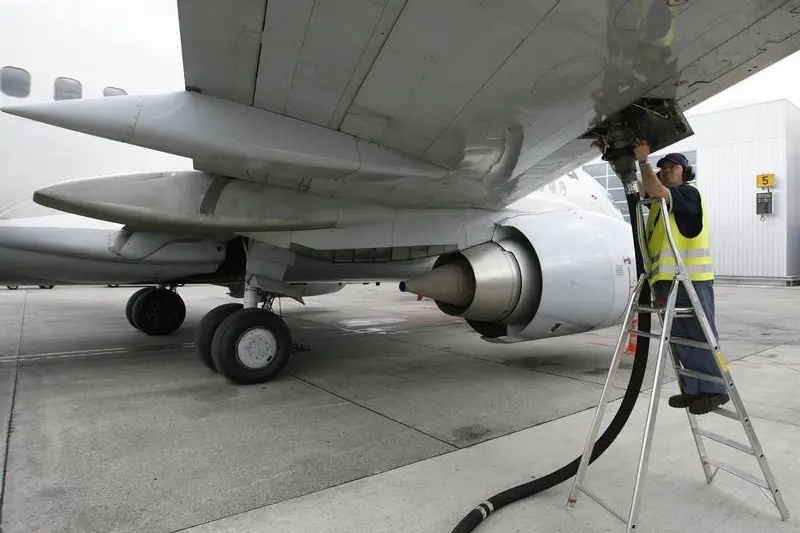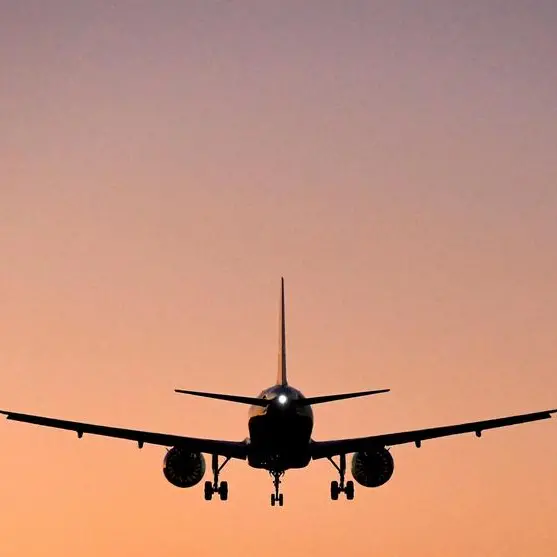PHOTO
Image used for illustrative purpose. A ground staff member makes a fuel delivery for a Lufthansa plane at Cointrin airport in Geneva May 26, 2008. Denis Balibouse, Reuters
Global jet fuel demand is poised to soften as a slowdown in consumer spending hits travel budgets, a shift that could weigh on oil prices in the months ahead.
Global oil demand has struggled to meet expectations in the first half of the year due to weaker-than-forecast consumption in the United States and China, the top two oil markets.
Jet fuel makes up about 7% of global oil demand and was widely expected to be one of the pillars of growth this year as travel continues to rebound from the pandemic.
Global jet fuel demand averaged about 7.49 million barrels-per-day (bpd) this year through July, a nearly 500,000-bpd increase over the same period last year, according to Goldman Sachs data.
Demand will need to rise faster in the months ahead to meet the bank's growth forecast of 600,000 bpd for the year. That is looking less likely given the signs of slowdown.
Major U.S. airline operators and travel companies in recent days echoed worries that consumer spending is slowing as disposable incomes have shrunk, which is likely to weigh on leisure travel.
U.S. consumer spending growth averaged just 0.3% in the three months through June, the slowest increase in over a year.
"We see limited scope for further gains for (U.S.) jet fuel, traditionally the most macro-driven product category, as a cooling economy weighs on demand for air travel," the International Energy Agency (IEA) said on Tuesday.
Weaker economic activity could also worsen a slowdown in global trade, which would cut air freight demand, Bank of America analysts said. They noted that global trade has been experiencing a slowdown over the past few years as demand in the U.S. and Europe has shifted to services from goods.
This week, the Organization of the Petroleum Exporting Countries cut its 2024 oil demand forecast for the first time since it was issued in July 2023, while the IEA trimmed its 2025 estimate. Both cited weaker-than-expected economic growth in China and elsewhere among the reasons for the downgrade.
A global tech outage that grounded scores of flights for a few days in July has also impacted jet fuel demand. It was likely the reason that U.S. jet fuel consumption fell by about 10,000 bpd year-over-year in July, the IEA said.
"In sum, macro conditions for transportation fuels are deteriorating pretty quickly," Bank of America analysts said. "With this background in mind, we believe that the broader demand trends for jet fuel remain soft," they said.
LONG-TERM HIT
Some longer-term factors, such as changes in consumer behavior and improved technology, are also hitting consumption.
Improved efficiency and mileage in newer aircraft means airlines are carrying more passengers over longer distances while burning less fuel, Rystad analyst Wei Ran Gan said.
The average fuel economy of U.S. commercial carriers rose to 65.5 seat miles per gallon in 2023, from 64.9 in 2019. Seat mile is an aviation industry term used to measure airline capacity.
A post-pandemic shift in consumer preferences for shorter domestic flights over international destinations has also hurt demand, Bank of America analysts said.
Meanwhile, years of trade wars between the U.S. and China have cut air traffic between the countries to a quarter of what it was five years ago, Goldman Sachs analysts said.
International travel out of Russia has slumped 40% from 2019 levels as many borders have been closed to Russian passengers since Moscow's invasion of Ukraine in 2022, they added.
If those two routes had grown as other global air travel did, jet fuel demand would have been around 80,000 bpd higher, the analysts said.
They expect jet fuel demand will continue to grow, but warned that the slowdown from these issues and mileage improvements pose a risk to their oil demand and price forecasts for the year.
(Reporting by Seher Dareen in Bengaluru and Shariq Khan in New York; Editing by Liz Hampton and Nick Zieminski)























